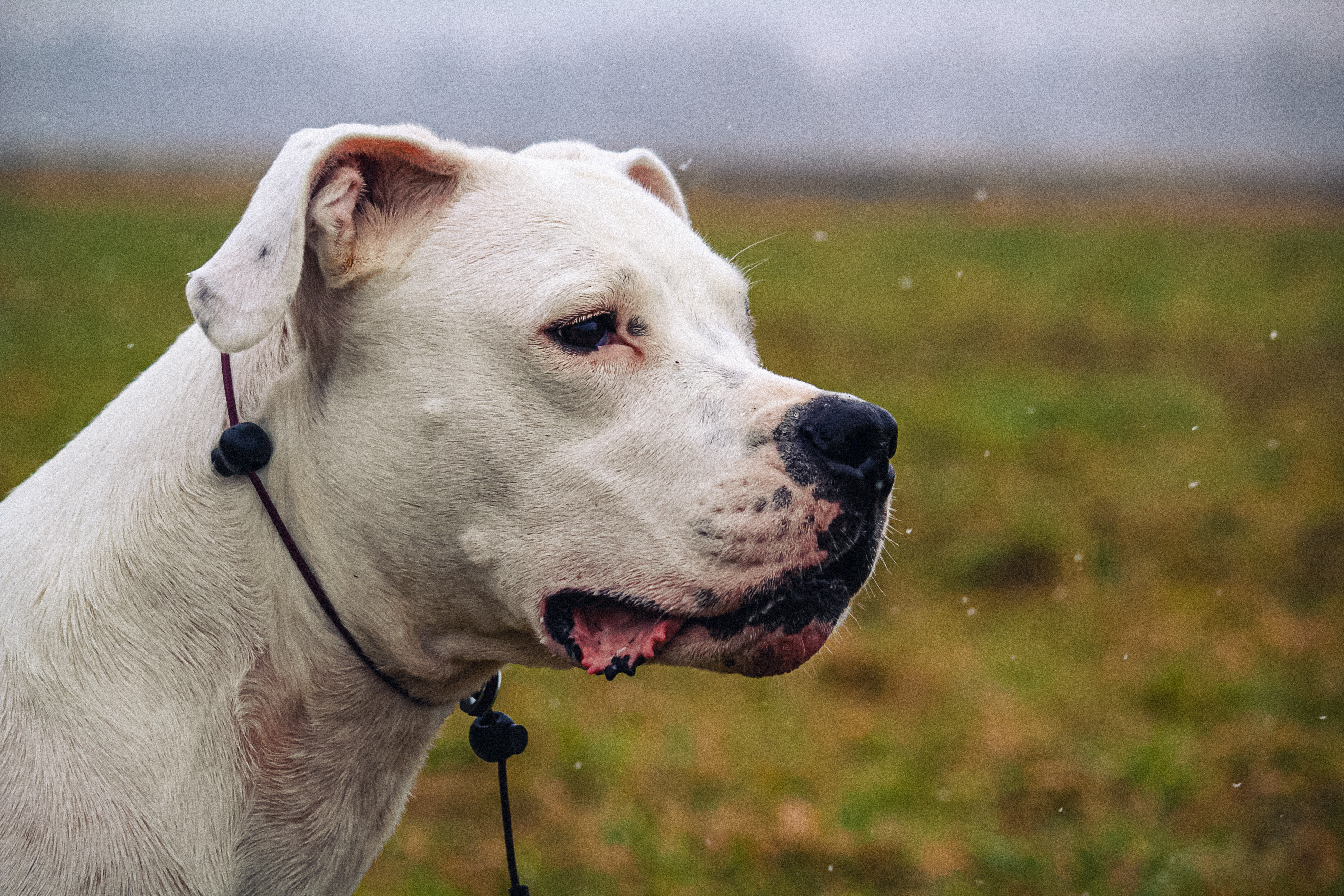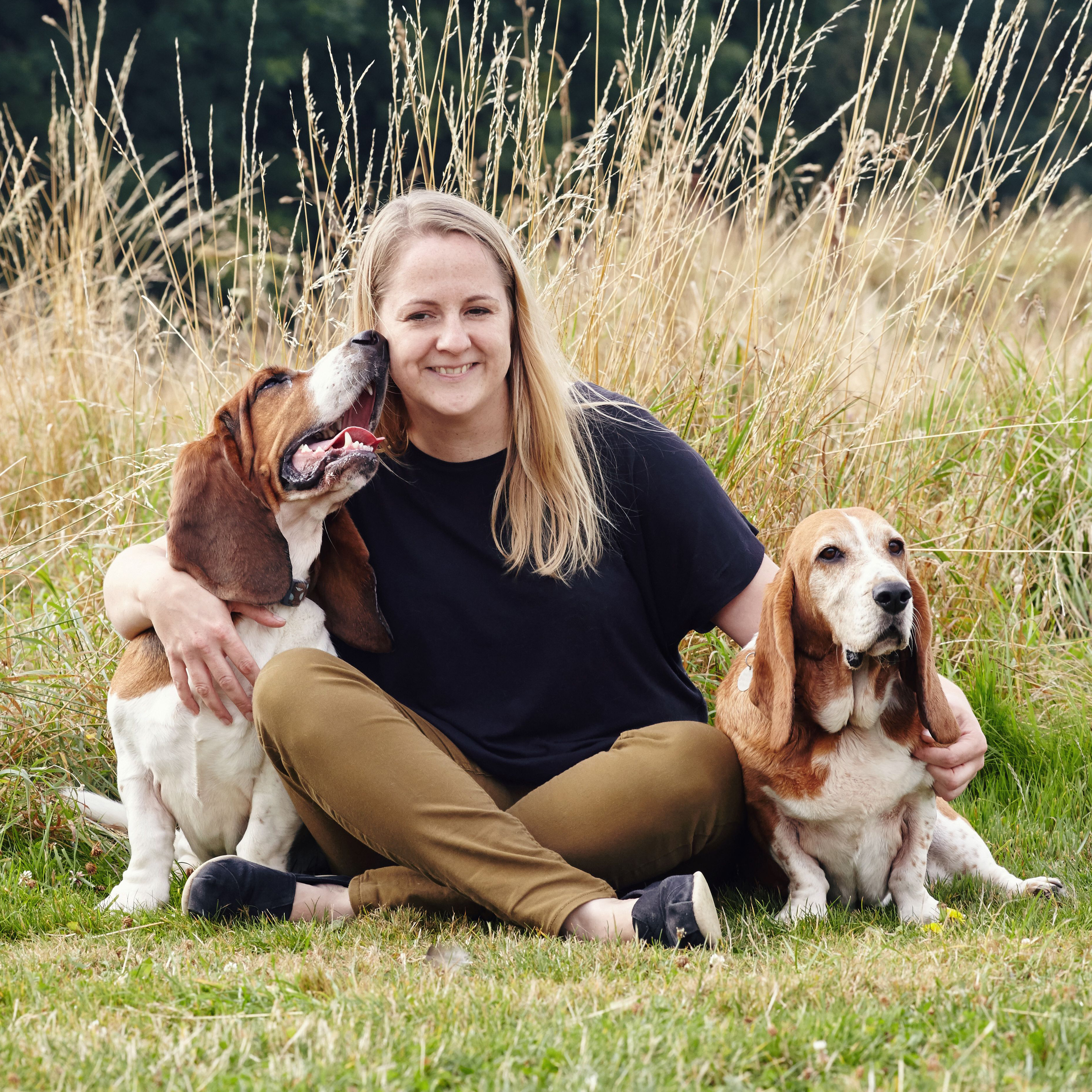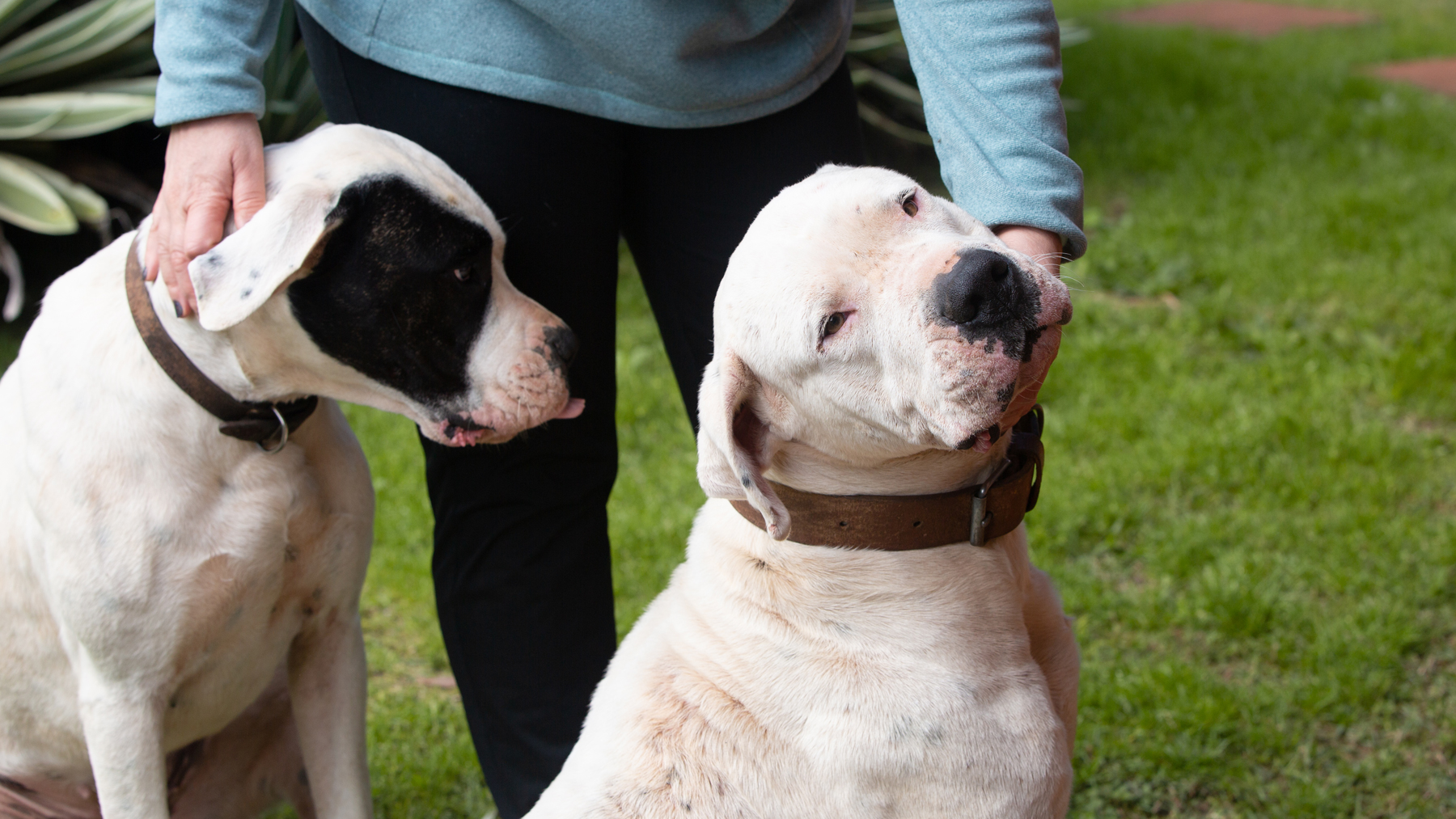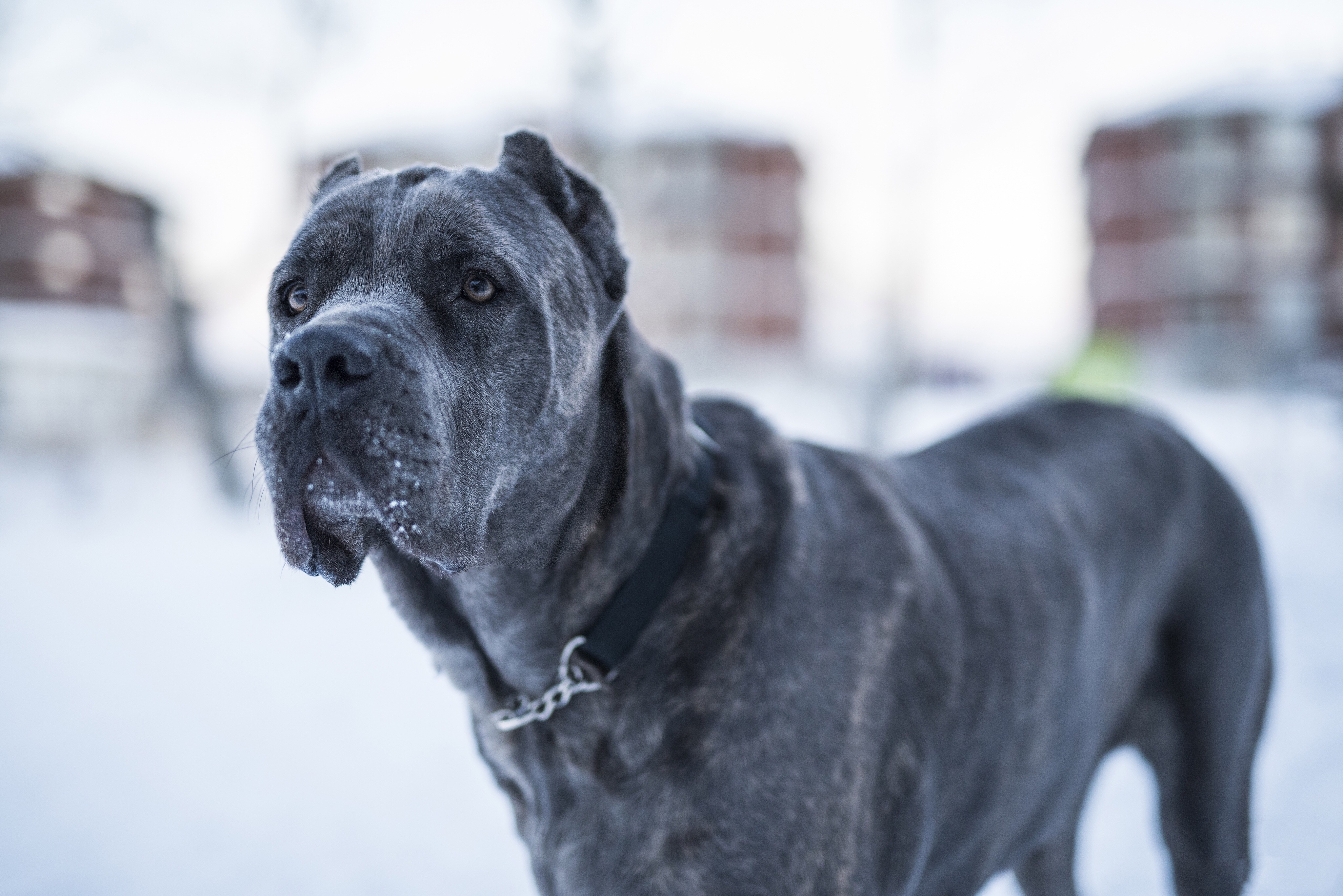Dogo Argentino vs Cane Corso: Which breed is best for you?
Dogo Argentino vs Cane Corso – unleashing the ultimate showdown of two intelligent and loyal breeds

If you're finding it challenging to decide between Dogo Argentino and Cane Corso breeds as your ideal furry friend, you've landed in the perfect place. This comprehensive guide provides all the essential information about these two breeds, to assist you in making an informed decision right before you stock up on all the very best dog treats.
When it comes to Dogo Argentino vs Cane Corso, they may differ in color but both majestic canines certainly share physical similarities like their large and muscular statures. However, there are distinctive traits that set them apart, making it easier for you to determine which breed suits you best.
We are going to delve into the origins of both breeds, examine their temperaments, exercise and grooming requirements, and assess their trainability. By the end of this guide, you'll have acquired expertise in both Dogo Argentino and Cane Corso, enabling you to effortlessly select the perfect companion for your unique needs.

Caroline Wilkinson is a Certified Animal Behaviourist. She is a Full (assessed) Member of the APDT and INTODogs – as well as a Registered Training Instructor (ABTC). Caroline is also a Certified Real Dog Yoga Practitioner and an Applied Canine Zoopharmacognosist.
As the Founder of digital pet coaching service Barket Place, Caroline has a passion for improving connections between human and hound, with a focus on relationships and reduction of stress for canines living in a human world.
Dogo Argentino vs Cane Corso: Origins
The Dogo Argentino hails from, yip, you guessed it - Argentina! A descendent of the now extinct Fighting Dog of Cordoba, the Dogo Argentino was bred by Antonio Martinez in the 1920s to suppress the aggressive instincts of its ancestor and create a breed that could be trained to follow an alpha in a pack.
Half a world away, the Cane Corso developed in Italy and descends from Roman war dogs. Its extinct ancestor, the Molossus, was a mastiff-type dog and the Cane Corso was originally bred to participate in hunting games and guard property.
Dogo Argentino vs Cane Corso: Size and appearance

You’ve probably spotted the obvious difference between these two breeds, with the Dogo Argentino being white, sometimes featuring a darker patch around the eyes, and the Cane Corso being typically black, although they can also come in fawn, red and gray colors. But color isn’t the only thing that sets these two dogs apart.
The Dogo Argentino has a short and smooth coat and large head that is supported by a thick yet elegant neck. Their bodies are balanced and sturdy with straight forelegs and muscular hindquarters and they tend to have an elegant and slender appearance. Like the Cane Corso, males tend to grow to around 27 inches, with females around 25-26 inches.
While the Cane Corso is also large and muscular, he’s also far bulkier than the Dogo and weighs anywhere up to 150lbs vs the Dogo’s far smaller 100lb stature. The Cane Corso has the same short coat as the Dogo, but it tends to be thicker and stiffer and they tend to have a slightly more intimidating appearance.
Dogo Argentino vs Cane Corso: Temperament
There’s not much separating these two breeds when it comes to temperament and personality, although the Dogo is a bit more reserved and even-tempered . Both make outstanding guard dogs and protectors, which is hardly surprising given their history and lineage.
That being said, because they come from war and fighting dog stock, both the Dogo and the Cane Corso are prone to aggression if they’re not socialized properly from a young age. And while they’re intensely loyal to their humans, they can be wary of strangers and assertive and willful.
And yet at the same time, both breeds are loving, devoted, affectionate, caring and extremely good with their owners' children, who they will protect as if they were their own pups. To bring out their best traits and avoid any problems, they’re best suited to confident handlers who will teach them their place in the pack.
Dogo Argentino vs Cane Corso: Intelligence and trainability

Speaking of the Dogo Argentino breed, certified animal behaviorist Caroline Wilkinson says, "These Mastiff-style dogs are extremely loyal and can make wonderful companions for owners who are willing to spend the time training. Kind, gentle training is the best way to grow confidence and teach skills to these dogs."
"They are known to be wary of strangers, which combined with their loyalty to their family might make their reactions to visitors to your home more challenging. Because of this, it’s really important to introduce them to new people in a positive way from a young age. Creating good relationships with humans outside of their home is really important, so early appropriate socialization is recommended," she notes.
Wilkinson adds that ownership of a Dogo Argentino is restricted In some countries or even prohibited due to their history of aggression towards other animals and sometimes humans. As with many ‘fighting breeds’ their reputation can be more damaging than their actual behavior. They can be successful pet dogs as long as they are supported by the humans around them as they grow and develop.
Discussing the Cane Corso, Wilkinson says this Italian Mastiff breed is one that provides their humans with companionship or guarding duties. "Like most Mastiffs, they are loyal to their family and when socialized well can be good companions in a home. They are incredibly large so care needs to be taken when they are around small humans or other animals. "
"Cane Corsos benefit from regular training - both to use their smart brains and to ensure that their humans have a strong bond and connection with them. As with any large breed, exercising these dogs can be tricky if you don’t have good leash control," she adds.
Dogo Argentino vs Cane Corso: Exercise needs
These are two very energetic dogs with a high prey drive who require serious exercise - you’re looking at a good two hours a day of physical and mental stimulation.
Mix it up each day with walks, hikes, bike rides, as well as some indoor games for dogs like hide-and-seek, puzzle feeders and teaching tricks. They also excel at agility and obedience events, so training them for these will keep them happy.
Neither dog is suitable for apartment living as they don’t like small spaces and need plenty of room to run and play. You’ll want a good fenced backyard and we recommend you don’t let them off the lead in public as their recall when distracted isn’t good.
Wilkinson notes that the Dogo Argentino breed has a history of hunting so these dogs require regular physical exercise, alongside training sessions to work their brain.
Dogo Argentino vs Cane Corso: Grooming
If you’re looking for a dog that will be low maintenance on the grooming front then either of these breeds are a good choice. Apart from during the two shedding seasons in spring and fall, both dogs hardly shed and their short and tight coats require little other than a light brushing once or twice a week with a dog brush - we recommend a soft bristle brush for these breeds.
As with all dogs, you’ll want to invest in a pair of the best dog nail clippers and give them a regular pup pedicure to prevent their nails from becoming overgrown and they don’t require regular bathing. The Dogo in particular is known for being very clean with little doggie odor.
If you're still trying to decide which dog breed is best for you after reading our Dogo Argentino vs Cane Corso face off, then why not explore the 15 best dog breeds for first-time owners or 15 playful dog breeds that make the best companions.
PetsRadar Newsletter
Get the best advice, tips and top tech for your beloved Pets

Kathryn is a freelance writer who has been a member of the PetsRadar family since it launched in 2020. Highly experienced in her field, she's driven by a desire to provide pet parents with accurate, timely, and informative content that enables them to provide their fur friends with everything they need to thrive. Kathryn works closely with vets and trainers to ensure all articles offer the most up-to-date information across a range of pet-related fields, from insights into health and behavior issues to tips on products and training. When she’s not busy crafting the perfect sentence for her features, buying guides and news pieces, she can be found hanging out with her family (which includes one super sassy cat), drinking copious amounts of Jasmine tea and reading all the books.
- Caroline WilkinsonCertified Animal Behaviorist
